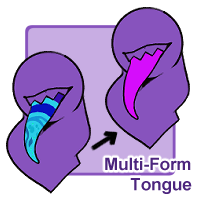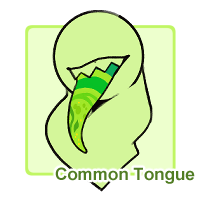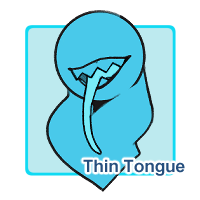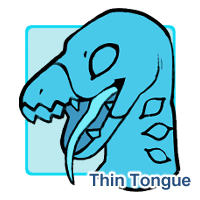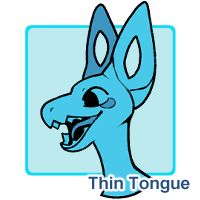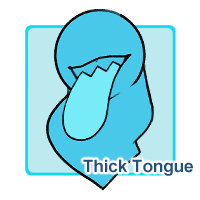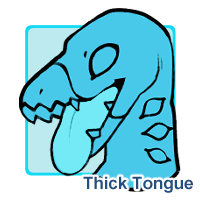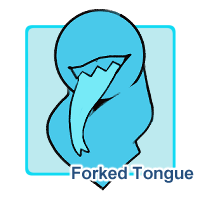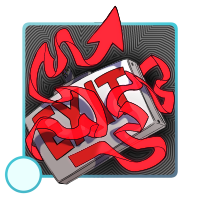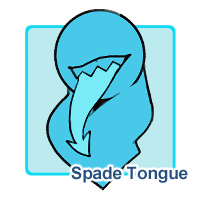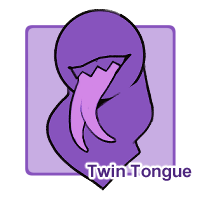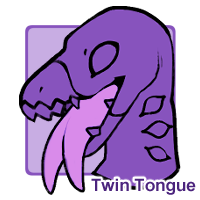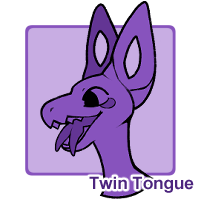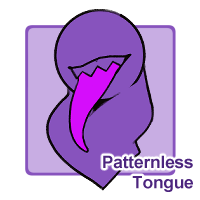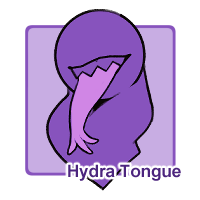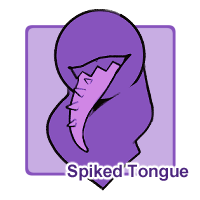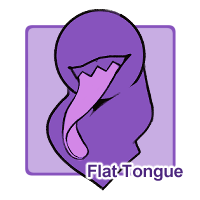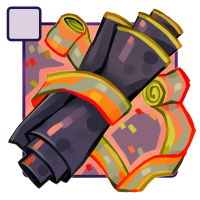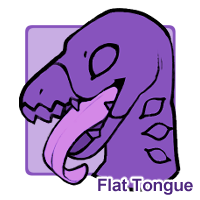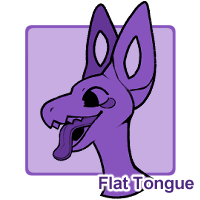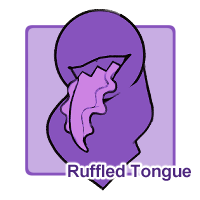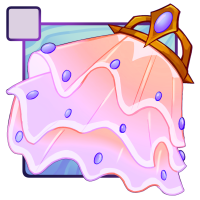Traits
[ Click here for Visual Sorter! ]
Multi-Form Tongue (Rare)
[The tongue changes between each new form of the CCCat. Any new tongue traits added must be counted additionally, but the tongue can switch color and pattern between forms using this trait. ]
- This trait is only applicable when a design has Multiple Forms. If the design has more than one additional form, only once instance of this trait is needed.
- Each tongue is attached to a form, and changes when the forms change.
- Traits may differ between each tongue, but require the additional traits present. If the tongues share a trait, only one instance of that trait is needed
- Tongue does not change unless the form changes.
- Tongue is not an additional or different tongue, but is the base tongue changing form.
- CCCATS - A CCCat’s tongue must be above 43% saturation and value to be considered a living tongue. Please provide a flat and unshaded eye reference when submitting a MYO or Redesign (MYO and Redesign Guide)
Common Tongue (CCCats) (Common)
[This includes all Common Traits for CCCat Tongues. They do NOT need to be listed at all when uploading a design, and are strictly informational. You may use as many as you’d like while designing a MYO]
- Patterned Tongue - [tongue has a visible marking or pattern on it. Pattern can be striped, spotted, or a variety/mixture of other patterns]
- Bumpy Tongue - [Small, bumpy textures on the tongue]
- Saturated/Living Tongue - [Tongue is bright and saturated, implying a living CCCat. Standard tongue cannot dip below 43% Saturation and Value on an HSV/B scale (MYO and Redesign Guide). Please submit a flat and unshaded tongue reference when submitting a MYO or Redesign]
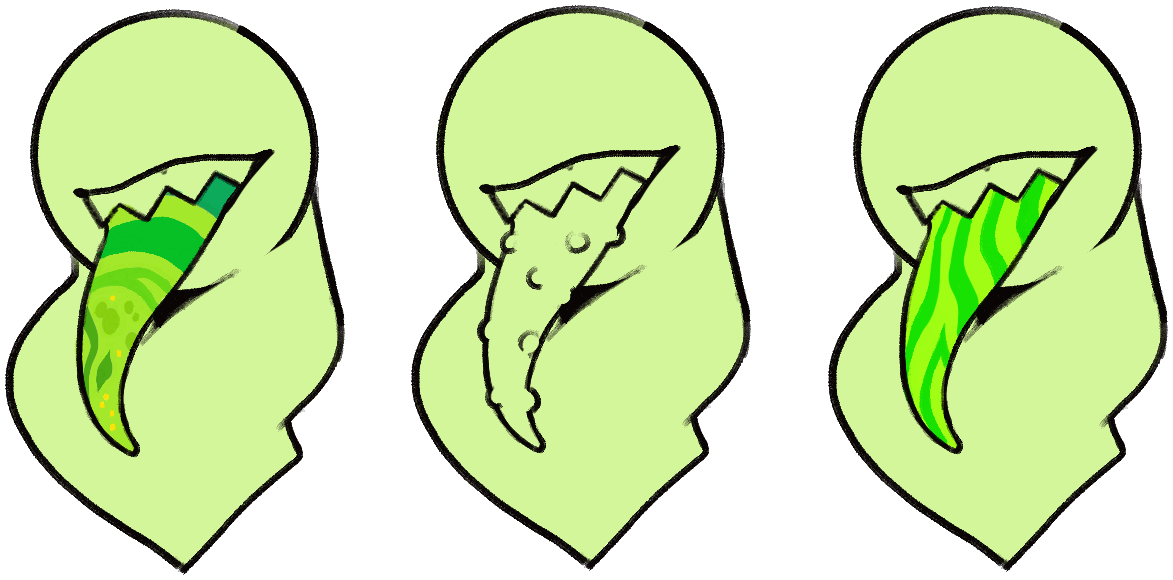
Thin Tongue (CCCats) (Uncommon)
[Thin tongue akin to a hummingbird's]
- Width should remain thin across the entire tongue. Minor taper may appear
- CCCATS - A CCCat’s tongue must be above 43% saturation and value to be considered a living tongue. Please provide a flat and unshaded tongue reference when submitting a MYO or Redesign (MYO and Redesign Guide)
Can be applied by:
Thin Tongue (Crooks) (Uncommon)
[Thin tongue akin to a hummingbird's]
- Width should remain thin across the entire tongue. Minor taper may appear
Can be applied by:
Thin Tongue (Gravents) (Uncommon)
[Thin tongue akin to a hummingbird's]
- Width should remain thin across the entire tongue. Minor taper may appear
Can be applied by:
Thick Tongue (CCCats) (Uncommon)
[A tongue that is wide with little to no taper]
- Width should remain thick across the entire tongue
- End of tongue should be wide and rounded
- CCCATS - A CCCat’s tongue must be above 43% saturation and value to be considered a living tongue. Please provide a flat and unshaded tongue reference when submitting a MYO or Redesign (MYO and Redesign Guide)
Thick Tongue (Crooks) (Uncommon)
[A tongue that is wide with little to no taper]
- Width should remain thick across the entire tongue
- End of tongue should be wide and rounded
Forked Tongue (Uncommon)
[A tongue with a small split at the end, like a snake]
- Tongue can split vertically
- Affects only the tip of the tongue
Can be applied by:
Spade Tongue (Uncommon)
[A triangular, diamond, or heart shaped end to the tongue]
- Can be a simple triangle, spade, arrow, or heart shape
- Affects the tongue tip only
- Cannot be complex in shape
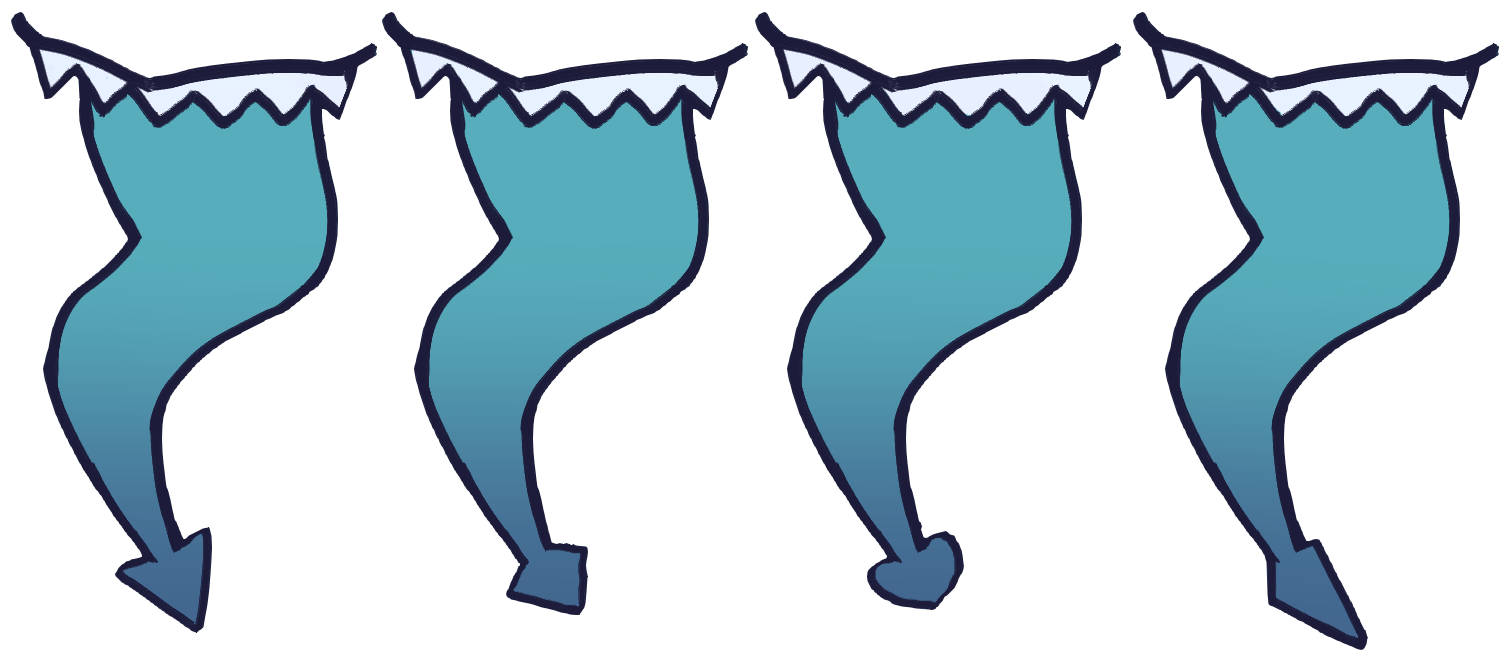
- CCCATS - A CCCat’s tongue must be above 43% saturation and value to be considered a living tongue. Please provide a flat and unshaded tongue reference when submitting a MYO or Redesign (MYO and Redesign Guide)
Can be applied by:
Twin Tongue (Rare)
[The tongue splits up to halfway down its length]
- Each tongue tip can be affected by tongue tip traits
- Cannot split more than halfway down the tongue
- CCCATS - A CCCat’s tongue must be above 43% saturation and value to be considered a living tongue. Please provide a flat and unshaded eye reference when submitting a MYO or Redesign (MYO and Redesign Guide)
Can be applied by:
Twin Tongue (Crooks) (Rare)
[The tongue splits up to halfway down its length]
- Each tongue tip can be affected by tongue tip traits
- Cannot split more than halfway down the tongue
Can be applied by:
Twin Tongue (Gravents) (Rare)
[The tongue splits up to halfway down its length]
- Each tongue tip can be affected by tongue tip traits
- Cannot split more than halfway down the tongue
Can be applied by:
Patternless Tongue (Rare)
[Tongue with no pattern or that only has a gradient of color]
- Tongue is either completely solid in color or is a multicolored gradient with no pattern
- Cannot be affected by tongue marking traits
- CCCATS - A CCCat’s tongue must be above 43% saturation and value to be considered a living tongue. Please provide a flat and unshaded eye reference when submitting a MYO or Redesign (MYO and Redesign Guide)
Hydra Tongue (Rare)
[Tongue with multiple splits at the tongue tip]
- Can be split 3-4 times at the tip
- Counted by number of tongue tips
- Cannot split more than a quarter up the tongue
- Should not resemble a hand
- CCCATS - A CCCat’s tongue must be above 43% saturation and value to be considered a living tongue. Please provide a flat and unshaded eye reference when submitting a MYO or Redesign (MYO and Redesign Guide)
Spiked Tongue (CCCats) (Rare)
[Tongue has small spikes]
- Spikes may be pointy, soft, leafy, blunt, slightly rounded, wiggly, thin, or thick
- Spikes may create a branching look, but should not be used to mimic multiple tongue tips elsewhere on the tongue
- Spikes cannot be overly large
- Spikes cannot cover the entirety of the tongue
- Spikes should not appear like thick branching tongues
- CCCATS - A CCCat’s tongue must be above 43% saturation and value to be considered a living tongue. Please provide a flat and unshaded eye reference when submitting a MYO or Redesign (MYO and Redesign Guide)
Spiked Tongue (Crooks) (Uncommon)
[Tongue has small spikes]
- Spikes may be pointy, soft, leafy, blunt, slightly rounded, wiggly, thin, or thick
- Spikes may create a branching look, but should not be used to mimic multiple tongue tips elsewhere on the tongue
- Spikes cannot be overly large
- Spikes cannot cover the entirety of the tongue
- Spikes should not appear like thick branching tongues
Flat Tongue (CCCats) (Rare)
[Tongue that is flat in shape]
- Tongue must be flat vertically or horizontally
- Tongue should still taper or round out at the end
- May not have holes, cuts, or odd shapes. You may use Odd-Shaped Tongue to create a flat tongue with the aforementioned shapes.
- CCCATS - A CCCat’s tongue must be above 43% saturation and value to be considered a living tongue. Please provide a flat and unshaded tongue reference when submitting a MYO or Redesign (MYO and Redesign Guide)
Can be applied by:
Flat Tongue (Crooks) (Rare)
[Tongue that is flat in shape]
- Tongue must be flat vertically or horizontally
- Tongue should still taper or round out at the end
- May not have holes, cuts, or odd shapes. You may use Odd-Shaped Tongue to create a flat tongue with the aforementioned shapes.
Can be applied by:
Flat Tongue (Gravents) (Rare)
[Tongue that is flat in shape]
- Tongue must be flat vertically or horizontally
- Tongue should still taper or round out at the end
- May not have holes, cuts, or odd shapes. You may use Odd-Shaped Tongue to create a flat tongue with the aforementioned shapes.
Can be applied by:
Ruffled Tongue (Rare)
[Tongue has a thin ruffle that runs down its length]
- Frill may run horizontally or vertically
- Frill may be flat or wiggly
- Tongue is standard in shape unless using other traits in combination, such as flat tongue or split tongue
- CCCATS - A CCCat’s tongue must be above 43% saturation and value to be considered a living tongue. Please provide a flat and unshaded tongue reference when submitting a MYO or Redesign (MYO and Redesign Guide)
